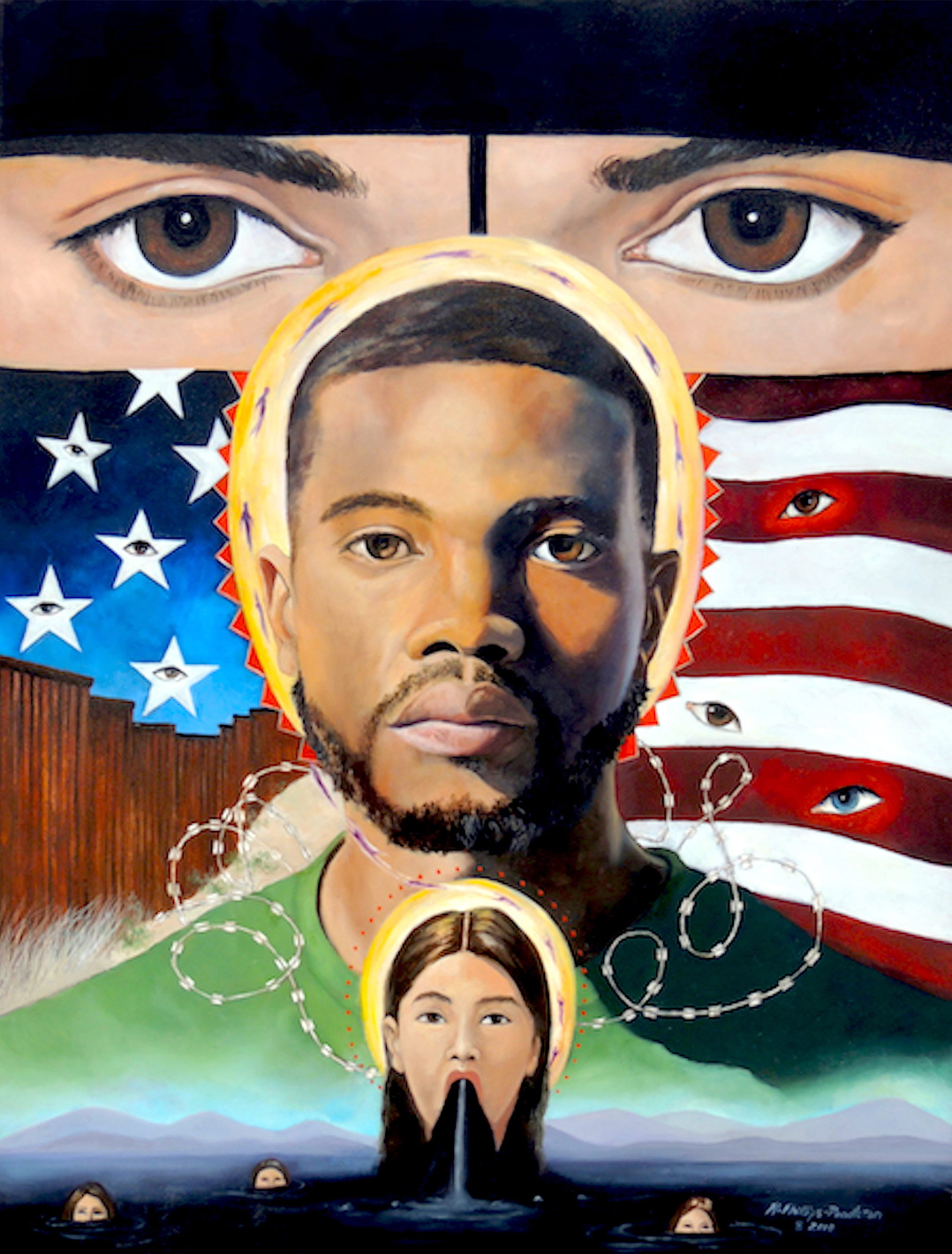Robyn Phillips-Pendleton
Professor of Visual Communications, Department of Art & Design, University of Delaware

'Who Are We the People?'. Oil & Alkyd Colors on Claybord. 18” x 20”. Currently on view at the Norman Rockwell Museum as part of the 'Reimagining the Four Freedoms' exhibition
The Discussion of Race in the Education of Future Illustrators
Abstract
An energized focus on race relations, mainly in the US, has brought a renewed examination of the history of illustration and race. Illustration has instrumentally and successfully marketed the constructed attitudes about race for centuries. Contemporarily, illustration is acknowledging race, identity, and ethnicity, but could expand criticality. We must educate students about illustration’s role in the constructed narrative of race and how images affect our responses. Empowering our students to engage with other cultures through various strategies to enhance their visual voices and deepen their knowledge and interpretation of the world is our responsibility as educators. We can facilitate important topics in illustration and racial history and provide contemporary direction in the age of digital illustration and its trends. Do Black and Brown illustrators have the same experiences as White illustrators in the industry? What significance did skin tonality have historically, and what is its significance in current imagery? How can adaptation help explore the normalization of people of color in imagery? How did comic stereotypes affect the perception of certain ethnic groups, and does this exist today? These questions are a sample of many when exploring race in an illustration Curriculum.
Illustration is one of the most widely used storytelling vehicles in the visual communications industry. The time is ripe for programs to emphasize the power illustration has to be an agent of change in visual conversations about race. There is much to glean from historical approaches used in illustrating various ethnicities such as Native Americans, Blacks, and others in different media such as newspapers, advertising, books, posters, comics, and ephemera. With the exploding interest in narrative and UI (user experience) illustration, understanding the history of illustration and the construction of race affects how educators facilitate inter-cultural tolerance and promote the exploration and incorporation of underrepresented groups in illustration.
Bio
Robyn Phillips-Pendleton is a visual storyteller, designer, and lecturer, whose creative spirit is driven by the human experience and social condition. She is fascinated by society’s deconstruction, history of race, and the visual translation of her emotional and aesthetic responses to these catalysts. She is currently creating a series of drawings based on race in America.
Her work has won awards and featured in national and international juried illustration and fine art exhibitions, and museums. She has lectured nationally and internationally at conferences, symposiums, universities, and museums. She is a chapter contributor to “Race, Perception, and Responsibility in Illustration,” to Wiley Blackwell Publishers, A Companion to Illustration. Robyn is a board member of the Society of Illustrators in New York and a member of the United States Air Force Artist Program. She served on the Norman Rockwell Museum National Advisory Board for their international traveling exhibition, “Enduring Ideals: Rockwell, Roosevelt, and the Four Freedoms,” and was a juror and contributing artist for the contemporary component to the traveling exhibition.
She is a professor of Visual Communications at the University of Delaware, who earned a BFA in Communication Arts, from Virginia Commonwealth University, in Richmond, VA, and an MFA in Illustration, from Syracuse University in Syracuse, NY.